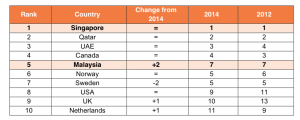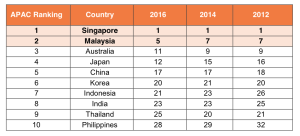Faithful+Gould Partners with Atkins Acuity to Build Infrastructure Capacity in Singapore

Singapore has, in recent years, been recognised as a highly attractive market in the world for infrastructure investment.
With support from Singapore’s Economic Development Board (EDB), a government agency that acts to stimulate economic growth and create employment opportunities in Singapore, Faithful+Gould and Atkins Acuity (Acuity) are investing and training consultants, managers and directors to expand skills in project management and whole asset lifecycle infrastructure development.
Faithful+Gould will be investing up to $2 million over the next five years to develop 16 high-potential project managers in deepening their skills for project leadership roles.
Acuity has plans to invest $2.5 million over the next five years in recruiting and developing 18 high potential consultants, managers and directors in Singapore to develop skills in advanced infrastructure development, overcoming complex asset management challenges, and delivering solutions across the whole asset lifecycle for developing economies.
Chief executive officer Donald Lawson said, “Investment in skills is essential to drive innovation and enable sustainable economic growth in the region. Specifically, with the advent of digital, we see an unprecedented momentum of change in the construction industry. Our partnership with EDB is empowering us to prepare for this change and build capacity and create job opportunities in Singapore while helping grow the infrastructure market.”
Ms Fong Pin Fen, director for cities, infrastructure and industrial solutions at EDB, added, “We are pleased that Atkins has set up its global end-to-end advisory business, Acuity, whose senior leaders are based in Singapore. Atkins Groups’ investment will help bring value to Singapore’s infrastructure ecosystem and strengthen our standing as Asia’s leading infrastructure hub. With talent as a key pillar of the sector, EDB looks forward to partnering Faithful+Gould and Acuity in not only growing its business, but also in the building up of skilled talent that will help fuel the industry’s growth.”
In recent years, Singapore has been recognised as a highly attractive market in the world for infrastructure investment thanks to its comprehensive infrastructure ecosystem, strong business environment, a healthy pipeline of development work and a growing economy. A workforce with deeper infrastructure skills will help the city better capture growing opportunities and maximise its growth potential.









